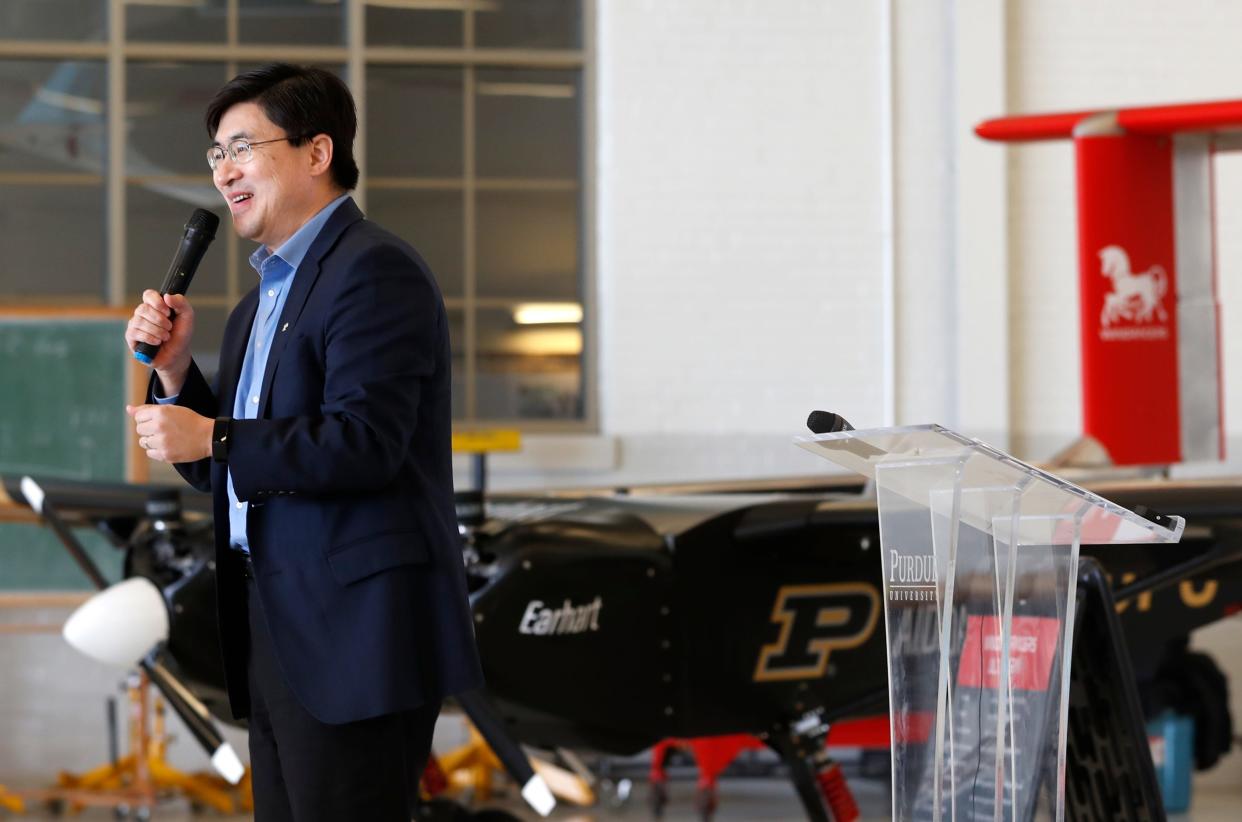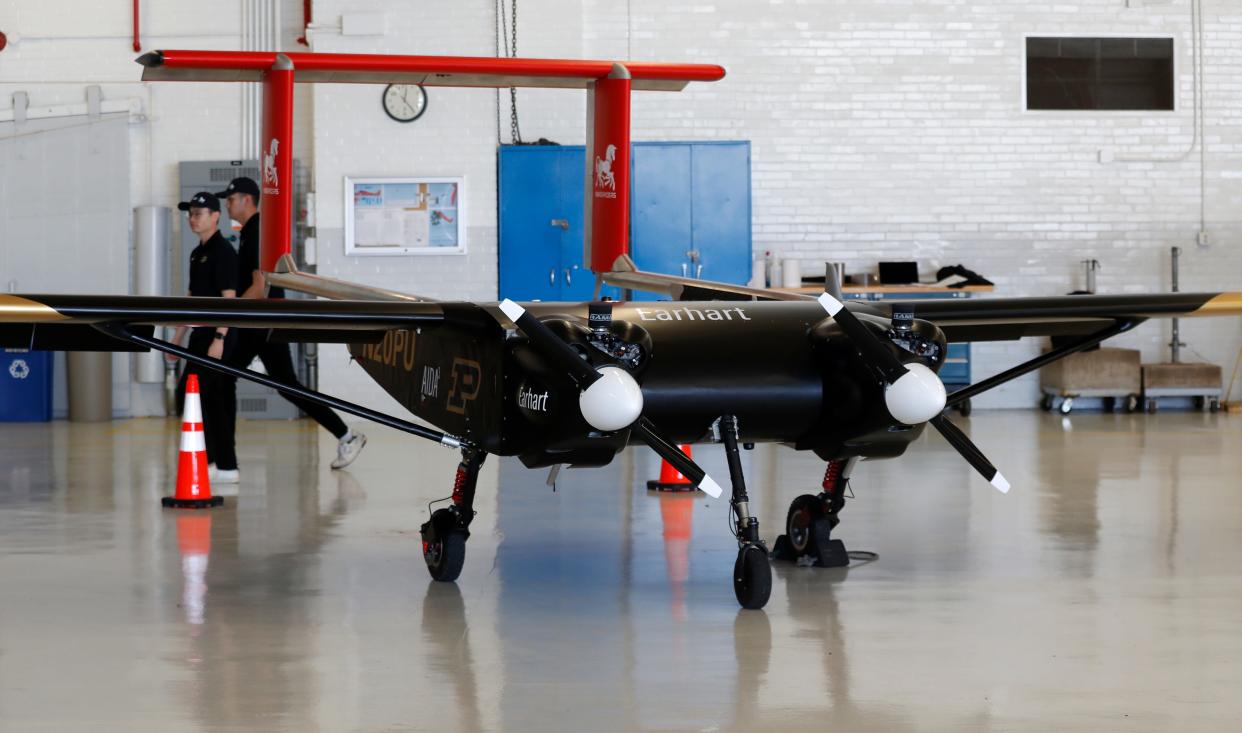Purdue University announces partnership with Windracers and unveils AI driven drones
WEST LAFAYETTE, Ind. — Purdue University announced a new partnership Friday with Windracers, a United Kingdom-based cargo vehicle company, and unveiled its new Center on AI for Digital, Autonomous and Augmented Aviation.
The partnership symbolizes the university’s commitment to being a leading researcher when it comes to incorporating applied artificial intelligence and machine learning technologies into the world of aviation transportation.
To demonstrate the two entities' partnership, they unveiled Windracers’ first fully autonomous flying large-scale unmanned aerial vehicles during its Purdue Aviation 2024 media day event on Friday.
The drone is named after Amelia Earhart, the legendary aviator who called Purdue University home.

“What we develop in the laboratory will be designed to make a difference when put into real-world practice,” Karen Plaut, Purdue University’s executive vice president of research, said.
“Purdue’s research strengths and success in aviation and AI linked with Windracers’ expertise in the transportation of the future makes for a powerful innovation engine.”
Windracers’ Earhart drone flew for the first time in the United States out of an Indiana airport. However, the first time Windracers used its drone was delivering COVID-19 supplies from Southampton to the Isle of Wight during the lockdown.

Windracers initially began conducting research on autonomous unmanned aerial vehicles in 2017 with the original goal of bringing down the cost of delivering humanitarian aid to remote communities in Africa. Since then, Windracers drones have completed tens of thousands of kilometers of autonomous flights for the Royal Navy, the United Kingdom Ministry of Defence and British Antarctic Survey, among a few.
The Earhart drone is mostly constructed of aluminum and weighs around 660 pounds. It is able to travel 620 miles, carry up to 220 pounds, cruise at a speed of 84 mph and land in a variety of runway conditions.
“I’ve strongly believed there’s some very specific applications for AI within the field of aviation, which will dramatically transform how it is actually delivered,” Stephen Wright, founder and executive chairman at Windracers, said.

“That’s what we’re working on is to bring the theory of AI into practical application for the aircraft.”
The Center on AI for Digital, Autonomous and Augmented Aviation will be the first major showcase of the university’s new vision to develop physical artificial intelligence.
“We are thrilled to be undertaking this journey with our partners at Windracers,” Sabine Brunswicke, director of the Center on AI for Digital, Autonomous and Augmented Aviation, said.
Brunswicke noted how in the past, it would traditionally take 10 people to operate one drone, but with the advancement in this technology, researchers are hoping to have it to where one operator can pilot hundreds of self-flying drones.
“In terms of applications, we really (want to) transform the way we think of logistics nowadays, it has economic implications of how you could really bring down the cost for delivery,” Brunswicke said.
Wright said, “The center’s focus on interdisciplinary research in modeling and human-autonomy teaming, developing advanced statistical models and integrated systems that enhance safe, real-world applications and empower human-machine collaboration to overcome key challenges is a central reason why we chose Purdue as a partner.”
This article originally appeared on Lafayette Journal & Courier: Purdue announces Windracer partnership, unveils self flying drone
